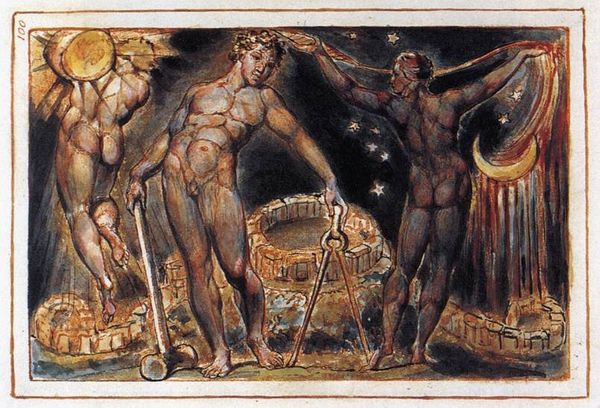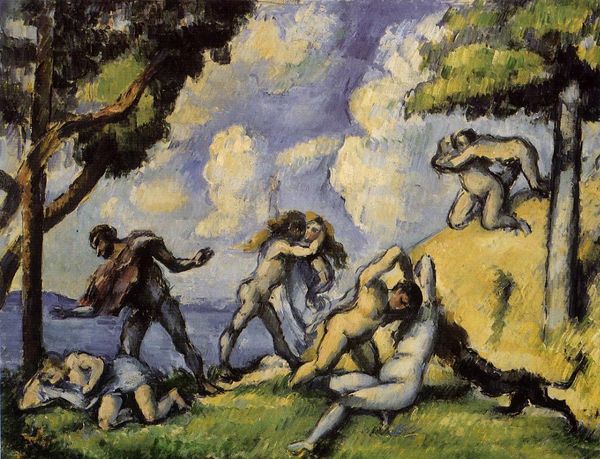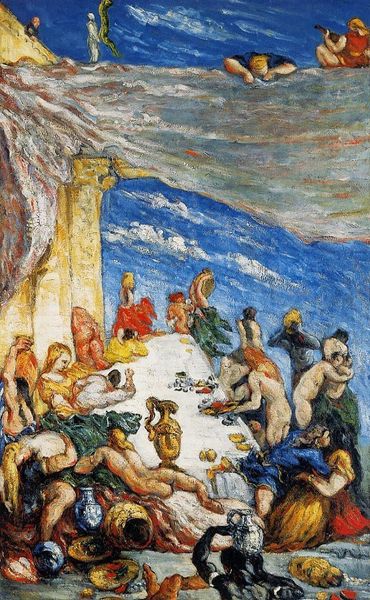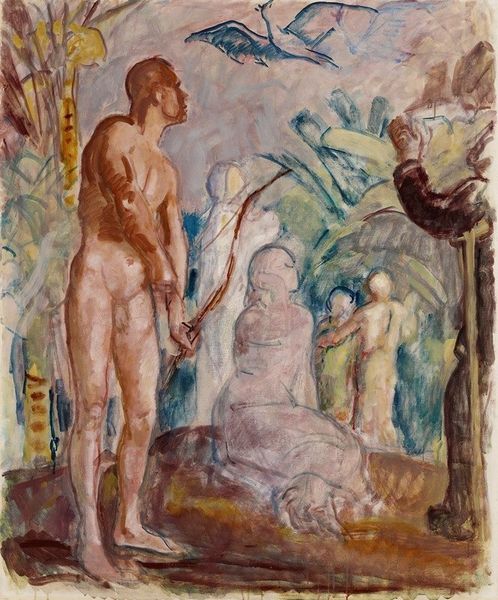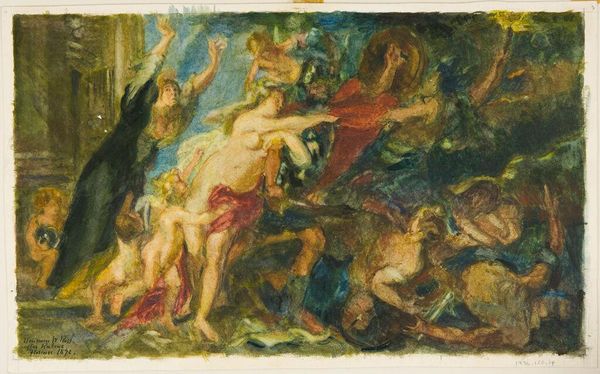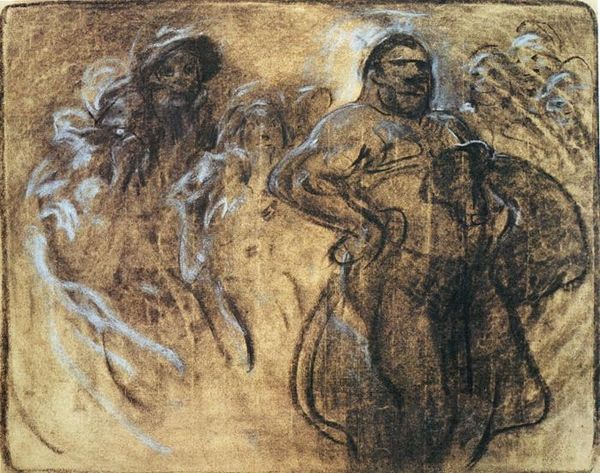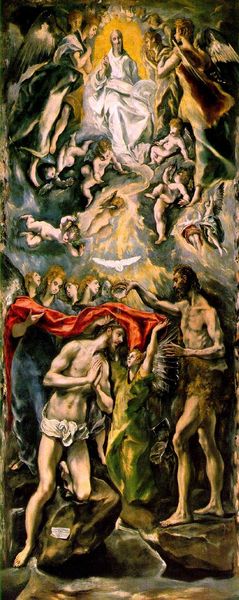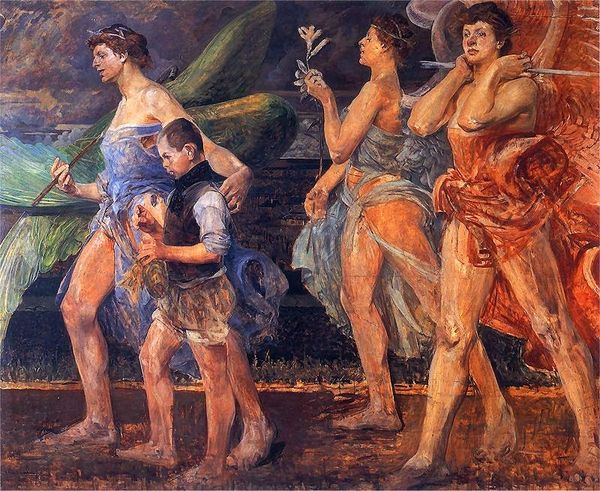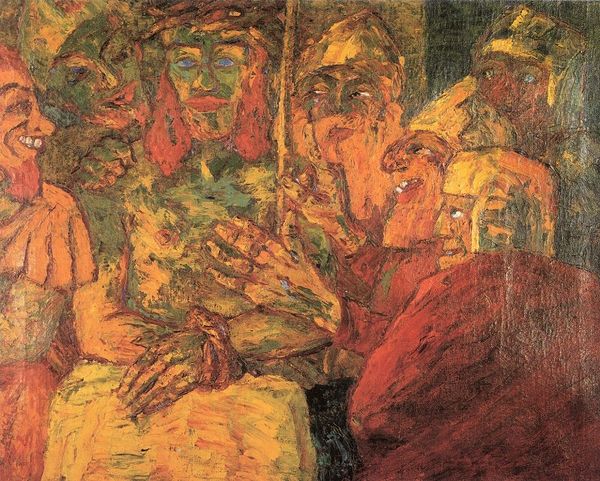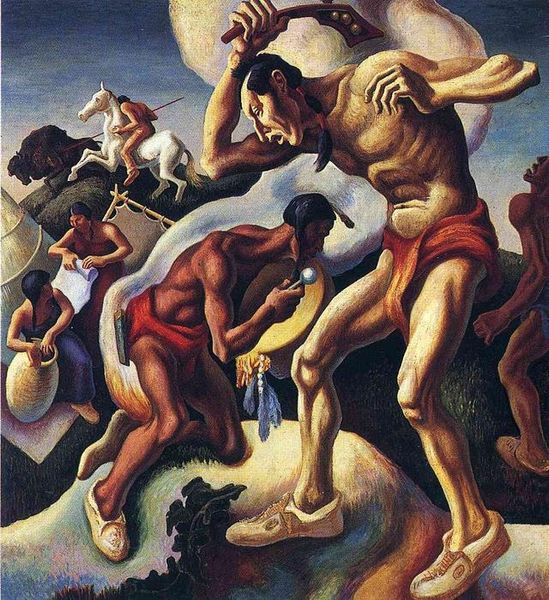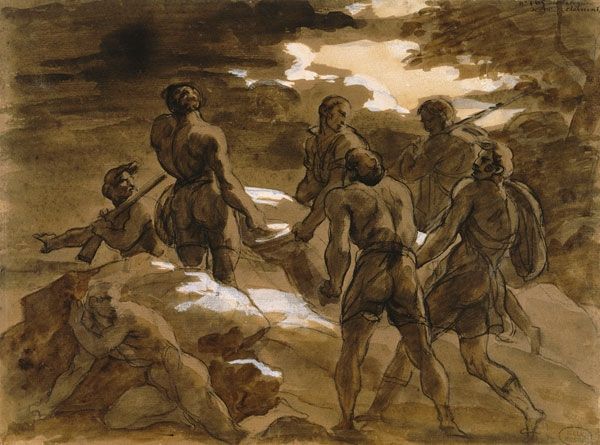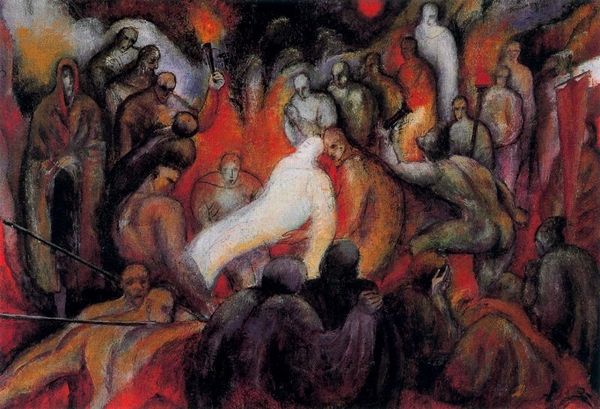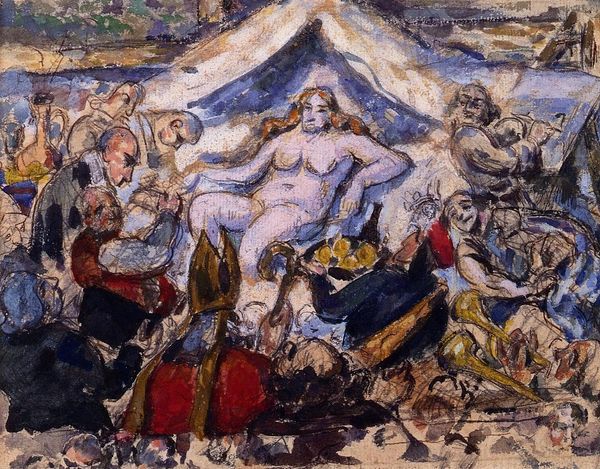
oil-paint
#
prophet
#
oil-paint
#
landscape
#
figuration
#
oil painting
#
expressionism
#
history-painting
#
expressionist
Copyright: Public domain US
Curator: Bertalan Pór's oil painting, "Sermon on the Mountain," completed in 1911, commands our attention with its raw figuration and expressive landscape. Editor: Woah, that's… intense. There's something almost aggressively earnest about it, you know? The colors are so feverish and that central figure, is he supposed to be Christ? He’s built like a linebacker! Curator: The artist deliberately distorts and exaggerates anatomical form, aligning with expressionist principles to convey heightened emotion. Notice the limited palette and the energetic, almost frantic brushstrokes, contributing to an overall sense of urgency. Editor: Right, it's like the emotion is exploding out of the canvas. But I also feel a tension between that raw energy and the subject matter. Like, the biblical scene is traditionally so solemn, and this is… well, visceral. Did Pór intend to challenge that tradition, or perhaps just re-energize it? Curator: Precisely. One could argue Pór leverages expressive distortion to amplify the core message itself. Note how the landscape's dynamism—those swirling hills—mirrors the supposed internal turmoil, providing a visual parallel to the spiritual awakening described in the biblical narrative. Editor: And what about the fact that he uses red tones predominantly, instead of a serene, biblical palette. It feels rebellious. Also the crowd in this painting appears disturbed or perhaps awed. And who dresses someone in striped pants to hear a sermon? Was this guy in his pajamas when the messiah showed up? Curator: (chuckles softly) One might speculate. Semiotics suggest this unconventional rendering intentionally juxtaposes a time-honored scene within a context of evolving modern interpretation. Pór’s bold representation disrupts staid artistic customs by amplifying internal tension and subjectivity. Editor: Yeah. For me, it stirs something… primal. It makes you feel the weight and emotion more than you see it, a very forceful style and vision. You almost wonder what Pór himself was going through while he made this painting, what emotions or tensions he wanted to convey, the world was quite an unstable place back then too... Curator: Indeed. This approach encapsulates an individual’s tumultuous exploration of historical concepts viewed via subjective emotional lens. "Sermon on the Mountain" functions less as portrayal; it symbolizes inquiry towards inner turmoil via grand narrative frameworks. Editor: In that regard it succeeded in ways Pór probably couldn't have foreseen. It speaks across eras in such a peculiar language of emotion, that transcends even his subject matter.
Comments
No comments
Be the first to comment and join the conversation on the ultimate creative platform.
